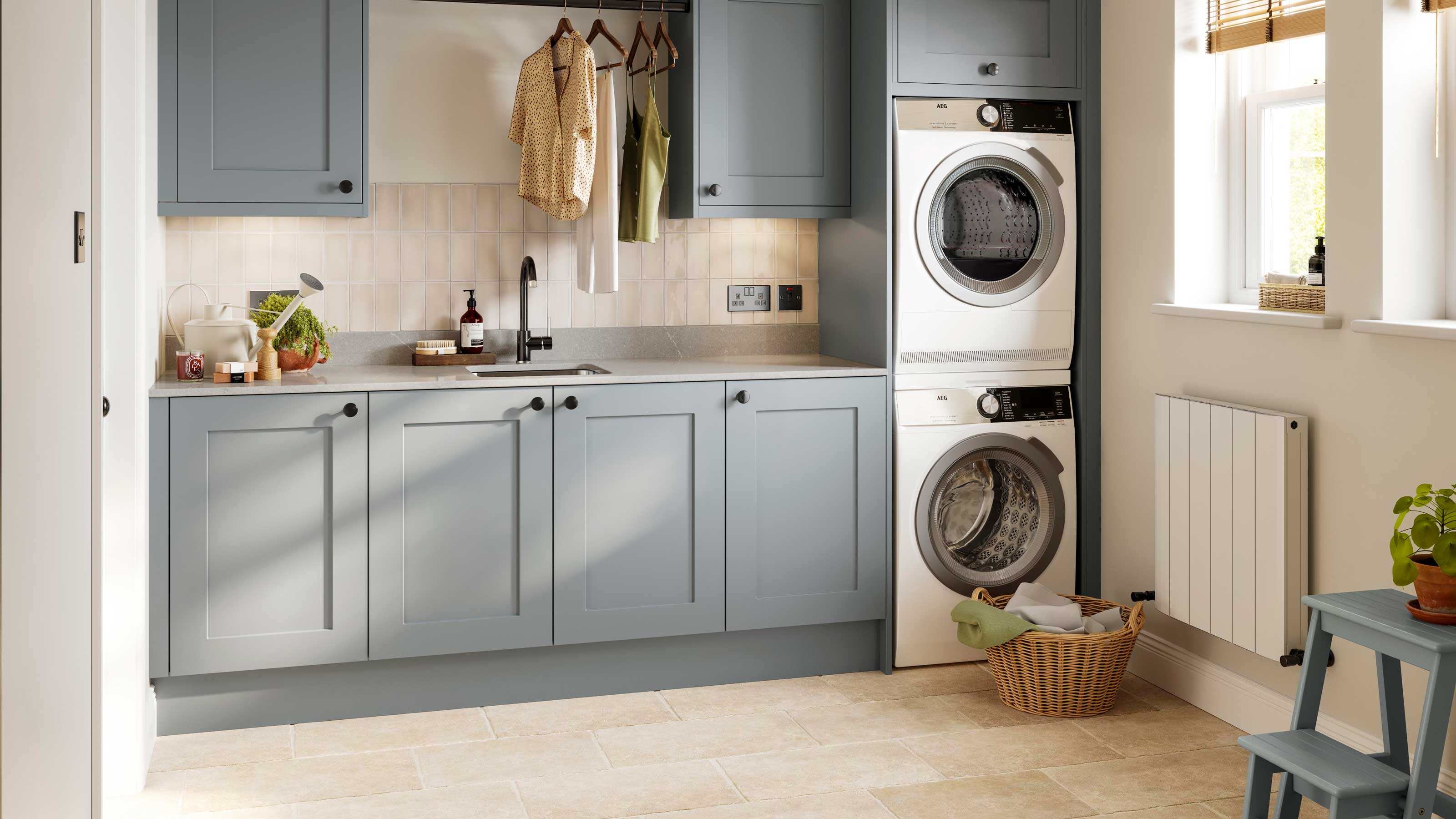

Articles
How To Reduce Humidity In Laundry Room
Modified: February 20, 2024
Looking for articles on how to reduce humidity in your laundry room? Discover effective tips and techniques to keep your laundry area dry and comfortable.
(Many of the links in this article redirect to a specific reviewed product. Your purchase of these products through affiliate links helps to generate commission for Storables.com, at no extra cost. Learn more)
Introduction
Having a laundry room is a convenient addition to any home, providing a dedicated space to wash, dry, and fold clothes. However, one common issue that many homeowners face in their laundry rooms is high humidity levels. Excessive humidity can lead to problems such as musty odors, mold growth, and potential damage to appliances or clothing. In this article, we will explore the causes of high humidity in the laundry room and provide practical tips for reducing it.
Humidity refers to the amount of moisture present in the air. It is measured as a percentage, with higher values indicating higher levels of moisture. In the laundry room, humidity can be caused by various factors, including the washing and drying process, poor ventilation, and inadequate moisture management. High humidity not only affects the comfort and air quality in the room but can also lead to more serious issues if left unchecked.
Identifying the causes of high humidity in the laundry room is crucial for implementing effective solutions. By understanding the root causes, homeowners can take the necessary steps to reduce humidity and create a healthier environment for their laundry activities.
Some common causes of high humidity in the laundry room include:
- Inefficient ventilation
- Leaky pipes or plumbing issues
- Improper insulation
- Unsealed windows or doors
- Proximity to water sources
In the following sections, we will delve into each of these causes in more detail and provide practical tips for reducing humidity in the laundry room. By implementing these recommendations, homeowners can ensure that their laundry room remains a comfortable and moisture-free space.
Key Takeaways:
- Proper ventilation, dehumidifiers, and managing moisture sources are essential for reducing humidity in the laundry room. Regular maintenance and cleaning also play a crucial role in creating a comfortable and healthy environment.
- Identifying and addressing the specific causes of high humidity, such as inefficient ventilation and leaky pipes, is crucial for implementing targeted solutions. By understanding the impact of humidity and implementing practical tips, homeowners can create a more pleasant and moisture-free laundry room.
Read more: How To Reduce Humidity In A Crawl Space
Understanding Humidity in the Laundry Room
Before we delve into how to reduce humidity in the laundry room, it’s important to have a basic understanding of what humidity is and how it can affect our homes. Humidity refers to the amount of moisture present in the air, and it is measured as a percentage. When the humidity level is high, the air feels moist and can lead to discomfort, condensation, and potential issues such as mold and mildew growth.
In the laundry room, humidity can be created in several ways. One of the main sources is the washing and drying process. When we wash our clothes, water evaporates from them and enters the air as moisture. Additionally, when we use a dryer to dry our clothes, it releases hot, moist air into the room. If this moisture is not properly vented out or managed, it can lead to an increase in humidity levels.
In addition to the washing and drying process, inadequate ventilation and poor air circulation can contribute to high humidity in the laundry room. If the room is not properly ventilated, the moisture created during laundry tasks can get trapped, leading to stagnant air and higher humidity levels. Similarly, if the room lacks proper air circulation, moisture will not be effectively removed, exacerbating the humidity issue.
Understanding the impact of humidity in the laundry room is crucial as it can lead to several problems. Excessive moisture can create a breeding ground for mold and mildew, resulting in musty odors and potential damage to the room’s structure, appliances, and even your clothes. High humidity can also make the room feel uncomfortable and affect the overall air quality.
To create an optimal environment in the laundry room, it’s important to maintain humidity levels within a reasonable range. The ideal humidity level for a home typically falls between 30% and 50%. By managing and reducing humidity in the laundry room, you can ensure a more pleasant experience while prolonging the lifespan of your appliances and protecting the integrity of your clothes.
Identifying the Causes of High Humidity
To effectively reduce humidity in the laundry room, it is important to identify the underlying causes first. By understanding what is contributing to the excess moisture, you can implement targeted strategies to address the specific issues. Here are some common causes of high humidity in the laundry room:
Inefficient Ventilation:
Proper ventilation is critical in reducing humidity levels. If your laundry room does not have adequate ventilation, the moisture generated from washing and drying clothes will not be able to escape, leading to increased humidity. Insufficient exhaust fans, blocked vents, or lack of windows can contribute to poor airflow and trap moisture inside the room.
Leaky Pipes or Plumbing Issues:
Leaky pipes or plumbing issues can introduce unwanted moisture into the laundry room. Even small leaks can gradually add up and contribute to high humidity levels. It’s essential to inspect and address any plumbing problems promptly to prevent further moisture accumulation.
Improper Insulation:
Poor insulation in the laundry room can lead to condensation and increased humidity. If the room lacks proper insulation, cold air from outside can infiltrate, leading to condensation when it comes into contact with warmer surfaces. Insulating walls, windows, and doors can help prevent this issue and maintain a more stable humidity level.
Unsealed Windows or Doors:
Unsealed windows or doors can allow moisture to seep into the laundry room, contributing to high humidity levels. Gaps or cracks around windows and doors can let humid air from outside enter the room, increasing the overall moisture content in the air. Sealing these openings can help prevent this problem.
Proximity to Water Sources:
If your laundry room is located near water sources such as bathrooms or kitchens, it may be more prone to high humidity. The moisture generated from these areas can easily travel to the adjacent laundry room, affecting its humidity levels. Taking measures to minimize moisture transfer, such as sealing openings and maintaining proper ventilation, can help mitigate this issue.
By identifying the specific causes of high humidity in your laundry room, you can implement targeted solutions to address them. In the following sections, we will explore practical tips and techniques to reduce humidity and create a more comfortable environment for your laundry activities.
Tips for Reducing Humidity in the Laundry Room
To create a more comfortable and moisture-free laundry room, it is essential to implement strategies that effectively reduce humidity levels. Here are some practical tips to help you tackle high humidity in your laundry room:
Read more: How To Clean A Laundry Room
1. Proper Ventilation and Air Circulation:
Ensure that your laundry room has adequate ventilation to allow moisture to escape. Install exhaust fans or open windows during and after laundry tasks to facilitate air circulation and promote the flow of fresh air. Consider using a dehumidifier to help remove excess moisture from the room.
2. Installing Dehumidifiers:
Dehumidifiers are excellent tools for reducing humidity levels in the laundry room. These devices work by extracting moisture from the air and collecting it in a reservoir. Choose a dehumidifier with a capacity suitable for your laundry room size, and empty the reservoir regularly to prevent overflow.
3. Managing Moisture Sources:
Be mindful of moisture sources within the laundry room. Make sure there are no leaks in your plumbing system, and promptly fix any pipe or faucet issues. Avoid hanging wet clothes in the laundry room to dry, as this can introduce excess moisture. Instead, consider drying clothes outdoors or using a well-ventilated dryer to minimize moisture production.
4. Regular Maintenance and Cleaning:
Regularly clean and maintain your washing machine and dryer to prevent the buildup of mold and mildew. Clean the lint filter in your dryer after each use and wipe down the interior of the appliances to remove any residual moisture. Additionally, clean the laundry room regularly to minimize dust and dirt accumulation, which can contribute to increased humidity.
Read more: How To Add A Laundry Room
5. Insulate and Seal:
To prevent moisture infiltration, ensure that the windows and doors in your laundry room are properly sealed. Consider installing weatherstripping or caulking around windows and doors to minimize air leaks. Insulate the walls and ceiling if necessary to maintain temperature stability and prevent condensation.
6. Utilize Exhaust Fans:
If your laundry room has an exhaust fan, use it during and after laundry tasks to help remove humid air. Make sure the fan is in good working condition and clean the vents regularly to ensure optimal performance.
By implementing these tips, you can effectively reduce humidity in your laundry room, creating a more pleasant and moisture-free environment. Remember to regularly monitor humidity levels using a hygrometer and make adjustments as needed to maintain optimal conditions.
Proper Ventilation and Air Circulation
When it comes to reducing humidity in the laundry room, proper ventilation and air circulation play a crucial role. Adequate airflow helps to prevent moisture buildup, improve air quality, and create a more comfortable environment. Here are some tips to ensure proper ventilation and air circulation in your laundry room:
1. Install Exhaust Fans:
One of the most effective ways to improve ventilation in the laundry room is by installing exhaust fans. These fans help to remove humid air and odors from the room, allowing fresh air to come in. Make sure to install an appropriately sized exhaust fan that can handle the volume of air in your laundry room.
Read more: How To Finish Laundry Room
2. Use Windows and Doors:
Whenever possible, open windows and doors in the laundry room to promote natural ventilation. This allows fresh air to circulate and helps to remove excess moisture. Consider installing screen windows or doors to prevent insects from entering while still allowing airflow.
3. Position Appliances Properly:
When arranging your appliances in the laundry room, ensure there is enough space around them for air to circulate. Do not overcrowd the room, as this can impede proper airflow and increase humidity. Leave enough clearance around the washer and dryer to prevent heat buildup and allow for proper ventilation.
4. Maintain Ventilation Ducts:
Regularly inspect and clean the ventilation ducts in your laundry room to ensure they are free from debris or blockages. Clogged ducts can restrict airflow, leading to increased humidity. If you notice any issues, such as blockages or air leaks in the ducts, it is advisable to seek professional assistance to rectify the problem.
5. Consider Cross-Ventilation:
If your laundry room has multiple windows or doors, you can take advantage of cross-ventilation. Open windows or doors on opposite sides of the room to create a flow of air. This allows for better circulation and helps to reduce humidity levels. Use fans strategically to enhance cross-ventilation if necessary.
Read more: How To Hide A Laundry Room
6. Regularly Clean Vents and Filters:
Keep the vents and filters in your laundry room clean to ensure optimal airflow. Clean the lint filter in your dryer after each use, as a clogged filter can impede airflow and trap moisture. Similarly, clean the exhaust fans, vents, and air conditioning filters regularly to remove dust and debris that can hinder ventilation.
Proper ventilation and air circulation are vital for reducing humidity in the laundry room. Implementing these tips will help to improve air quality, prevent mold and mildew growth, and create a more comfortable and efficient space for your laundry activities.
Installing Dehumidifiers
Dehumidifiers are excellent devices for reducing humidity in the laundry room. They work by extracting excess moisture from the air, helping to create a more comfortable and dry environment. Here are some important considerations when installing dehumidifiers:
1. Determine the Size and Capacity:
Before purchasing a dehumidifier, it’s important to determine the size and capacity that will be suitable for your laundry room. The size of the dehumidifier depends on the square footage of the room, as well as the level of humidity. Consider the humidity levels in your area and choose a dehumidifier with a capacity that matches your specific needs.
2. Positioning the Dehumidifier:
Place the dehumidifier in a central location in the laundry room where it can effectively extract moisture from the air. Keep in mind that airflow is crucial for the dehumidifier to work efficiently, so avoid placing it against walls or furniture that may obstruct air circulation. It’s also essential to keep the dehumidifier away from any potential water sources to prevent damage and ensure safe operation.
3. Consider Drainage Options:
Most dehumidifiers come with a built-in reservoir to collect the extracted moisture. However, it’s important to consider the drainage options available. Some dehumidifiers have a built-in pump system that can automatically drain the collected water, while others require manual emptying of the reservoir. If you prefer a more convenient option, choose a dehumidifier with a built-in pump or consider installing a hose for continuous drainage.
4. Set the Desired Humidity Level:
Modern dehumidifiers often have the option to set the desired humidity level. This allows you to control the moisture level in the laundry room according to your preference. Set the desired humidity level to the recommended range of 30% to 50% for optimal comfort and to prevent mold and mildew growth.
5. Regular Maintenance:
To keep the dehumidifier functioning efficiently, it’s important to perform regular maintenance. Clean or replace the filters as recommended by the manufacturer to ensure optimal performance. Regularly check the reservoir or drainage system and empty or clean it as needed. Keeping the dehumidifier well-maintained will help prolong its lifespan and ensure it continues to effectively reduce humidity in the laundry room.
Installing a dehumidifier in the laundry room can significantly reduce humidity levels, minimize the risk of mold and mildew growth, and create a more comfortable environment for laundry tasks. By following these tips, you can ensure proper installation and maximize the benefits of your dehumidifier.
Managing Moisture Sources
Managing moisture sources in the laundry room is crucial for reducing humidity levels and preventing the buildup of excess moisture. By addressing potential sources of moisture, you can create a healthier and more comfortable environment for your laundry activities. Here are some tips for effectively managing moisture sources in your laundry room:
Read more: How To Decorate My Laundry Room
1. Fix and Prevent Leaks:
Inspect your laundry room for any plumbing issues or leaks. Leaky pipes or faucets can introduce unwanted moisture into the room, leading to increased humidity levels. Address any leaks promptly to prevent further moisture accumulation. Consider hiring a professional plumber if necessary to ensure thorough repairs.
2. Properly Vent Dryer:
If you use a dryer in your laundry room, ensure that it is properly vented to the outside. A vented dryer allows the hot, humid air generated during the drying process to be expelled outside the room. Make sure the vent hose is clear of obstructions and properly connected. Regularly clean the lint filter to improve airflow and prevent excess moisture buildup.
3. Avoid Hanging Wet Clothes:
Instead of hanging wet clothes in the laundry room to dry, consider drying them outdoors or using a well-ventilated dryer. Hanging wet clothes indoors can introduce excess moisture into the air and contribute to high humidity. If space allows, set up a drying rack in a well-ventilated area outside of the laundry room.
4. Adequate Ventilation:
Proper ventilation is essential for reducing humidity in the laundry room. Ensure that the room has sufficient airflow by using exhaust fans, opening windows, or installing a ventilation system. Ventilation helps to remove humid air and allows fresh air to circulate, reducing moisture buildup.
Read more: How To Store Hangers In Laundry Room
5. Use Moisture Absorbers:
Placing moisture-absorbing products, such as silica gel packets or desiccant containers, in your laundry room can help to reduce excess moisture. These products work by absorbing moisture from the surrounding air, helping to maintain a drier environment. Replace or recharge the moisture absorbers as instructed by the manufacturer.
6. Regularly Clean and Dry the Laundry Room:
Maintain a clean and dry laundry room by regularly cleaning and drying any spills or water accumulation. Wipe down surfaces, especially around the washing machine and sink area, to prevent excess moisture from lingering. Remove any standing water promptly to minimize the chances of mold and mildew growth.
By actively managing moisture sources in your laundry room, you can effectively reduce humidity levels and create a more comfortable space. Taking these preventative measures will help to mitigate the risk of mold, mildew, and other moisture-related issues, ensuring an optimal environment for carrying out your laundry tasks.
Regular Maintenance and Cleaning
Regular maintenance and cleaning are vital for reducing humidity in the laundry room and ensuring optimal functionality of your appliances. By incorporating these tasks into your routine, you can prevent the buildup of moisture, minimize the risk of mold and mildew growth, and maintain a clean and healthy environment. Here are some essential maintenance and cleaning tips for your laundry room:
1. Clean the Washing Machine:
Regularly clean the inside of your washing machine to remove any residue, detergent buildup, or mold. Empty the lint filter, and wipe down the drum, door seal, and detergent dispenser. Consider running a cleaning cycle with hot water and vinegar or a washing machine cleaner to eliminate any lingering odors or bacteria.
Read more: How To Tile Laundry Room Floor
2. Clean the Dryer:
Regularly clean the lint filter in your dryer after each use to improve airflow and prevent the buildup of lint. Wipe down the interior of the dryer to remove any lint or debris. Check the dryer vent and remove any blockages to ensure proper ventilation. This helps to prevent excess moisture and reduces the risk of fire hazards.
3. Remove Moisture from the Room:
If you notice excess moisture in the laundry room, take measures to remove it promptly. Use towels or a mop to wipe up any spills or standing water. Consider using a dehumidifier or portable fans to help dry out the room and reduce humidity levels. Ensure proper ventilation by opening windows or using exhaust fans to promote airflow.
4. Clean Air Vents and Ducts:
Regularly inspect and clean the air vents and ducts in your laundry room. Dust, dirt, and debris can accumulate in these areas and hinder proper airflow. Use a vacuum or a damp cloth to clean the vents and remove any blockages. Consider scheduling professional duct cleaning to ensure optimal ventilation and prevent the spread of allergens.
5. Eliminate Mold and Mildew:
If you notice any signs of mold or mildew in your laundry room, take immediate action to address it. Clean any visible mold or mildew with a mixture of water and mild detergent or a specialized mold cleaner. Consider using a mold-resistant paint or primer on the walls to prevent future growth. Ensure that the room is well-ventilated to discourage mold and mildew formation.
Read more: How To Hide Furnace In Laundry Room
6. Regularly Check for Leaks:
Regularly inspect the plumbing system in your laundry room for any leaks. Check under sinks, around the washing machine, and near water connections for signs of moisture or water damage. Promptly fix any leaks to prevent further moisture buildup and potential damage to your appliances or the structure of the room.
By performing regular maintenance and cleaning tasks in your laundry room, you can effectively reduce humidity levels and ensure a clean and healthy environment. These simple steps not only help to prevent moisture-related issues but also prolong the lifespan of your appliances and create a more pleasant laundry experience.
Conclusion
Reducing humidity in the laundry room is essential to create a comfortable and healthy environment. Excessive moisture can lead to issues such as mold growth, musty odors, and potential damage to appliances and clothing. By understanding the causes of high humidity and implementing practical solutions, you can effectively manage and reduce humidity levels in your laundry room.
Proper ventilation and air circulation play a crucial role in reducing humidity. Installing exhaust fans, opening windows, and ensuring adequate airflow helps to remove moist air and bring in fresh air. Consider utilizing dehumidifiers to extract excess moisture from the room, particularly in areas with high humidity levels.
In addition to ventilation, managing moisture sources is important. Fixing leaks, properly venting dryers, and avoiding hanging wet clothes in the laundry room help to minimize the introduction of excess moisture. Regular maintenance and cleaning, such as cleaning the washing machine and dryer, cleaning air vents and ducts, and eliminating mold and mildew, prevent moisture-related issues and maintain a healthy environment.
By following these tips, you can create a more comfortable and moisture-free laundry room, ensuring that your clothes are properly cleaned and cared for. Remember to monitor humidity levels regularly and make adjustments as needed to maintain optimal conditions.
In conclusion, by understanding humidity and implementing effective strategies, you can reduce humidity levels in the laundry room, creating a more pleasant and efficient space for your laundry activities. With proper ventilation, moisture management, and regular maintenance, you can enjoy a comfortable and moisture-free laundry room while prolonging the lifespan of your appliances and protecting the quality of your clothes.
Frequently Asked Questions about How To Reduce Humidity In Laundry Room
Was this page helpful?
At Storables.com, we guarantee accurate and reliable information. Our content, validated by Expert Board Contributors, is crafted following stringent Editorial Policies. We're committed to providing you with well-researched, expert-backed insights for all your informational needs.
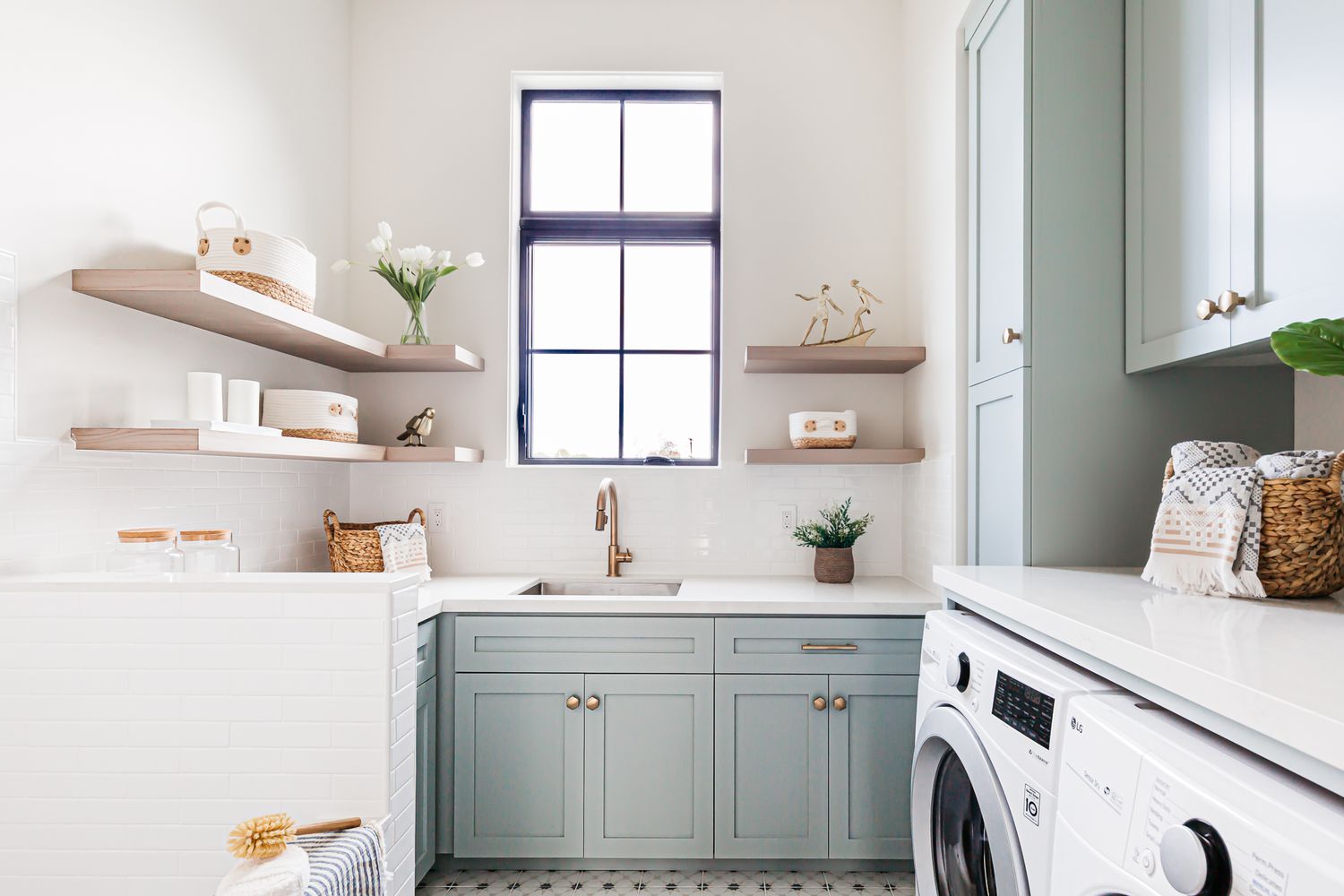
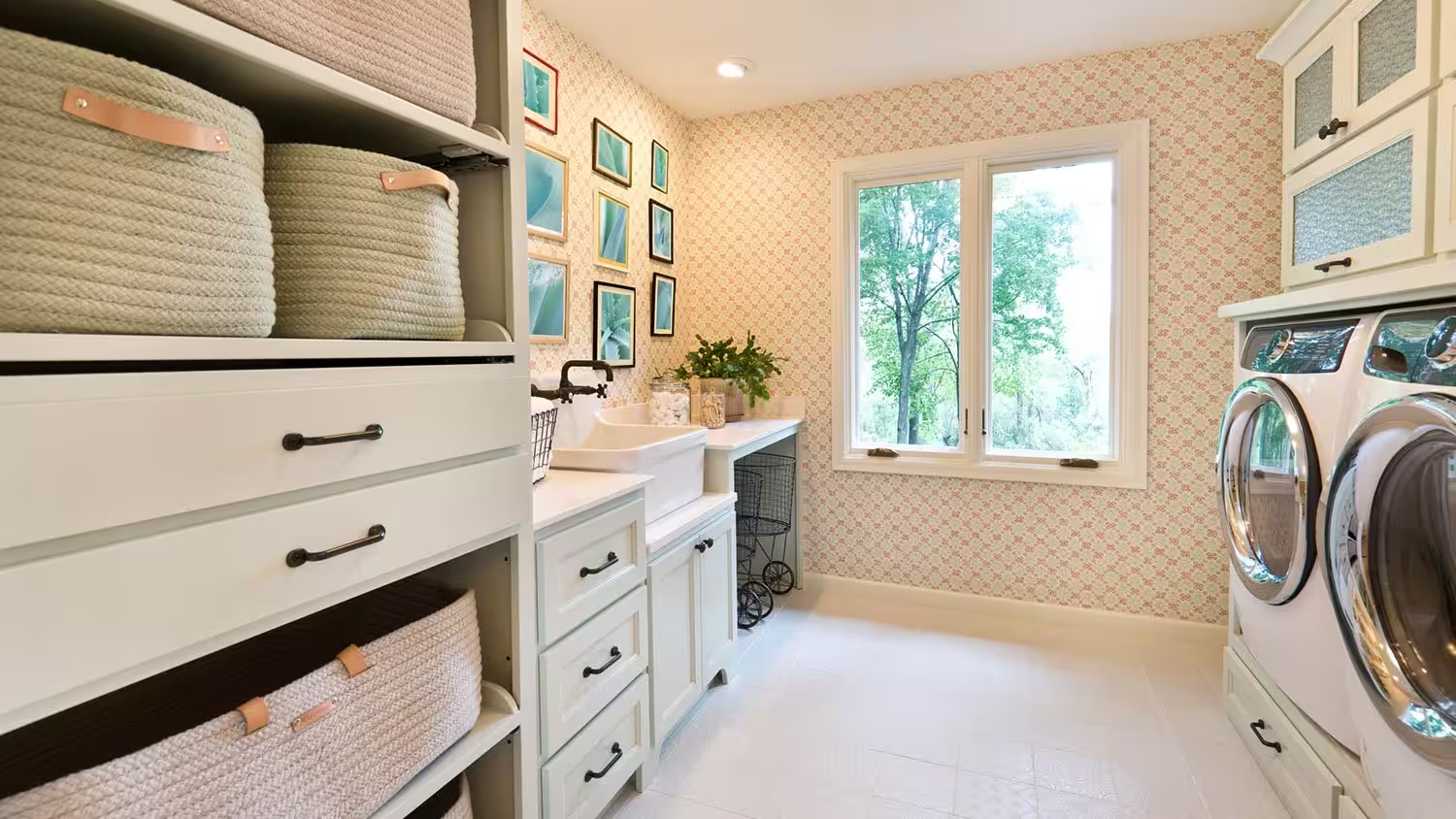
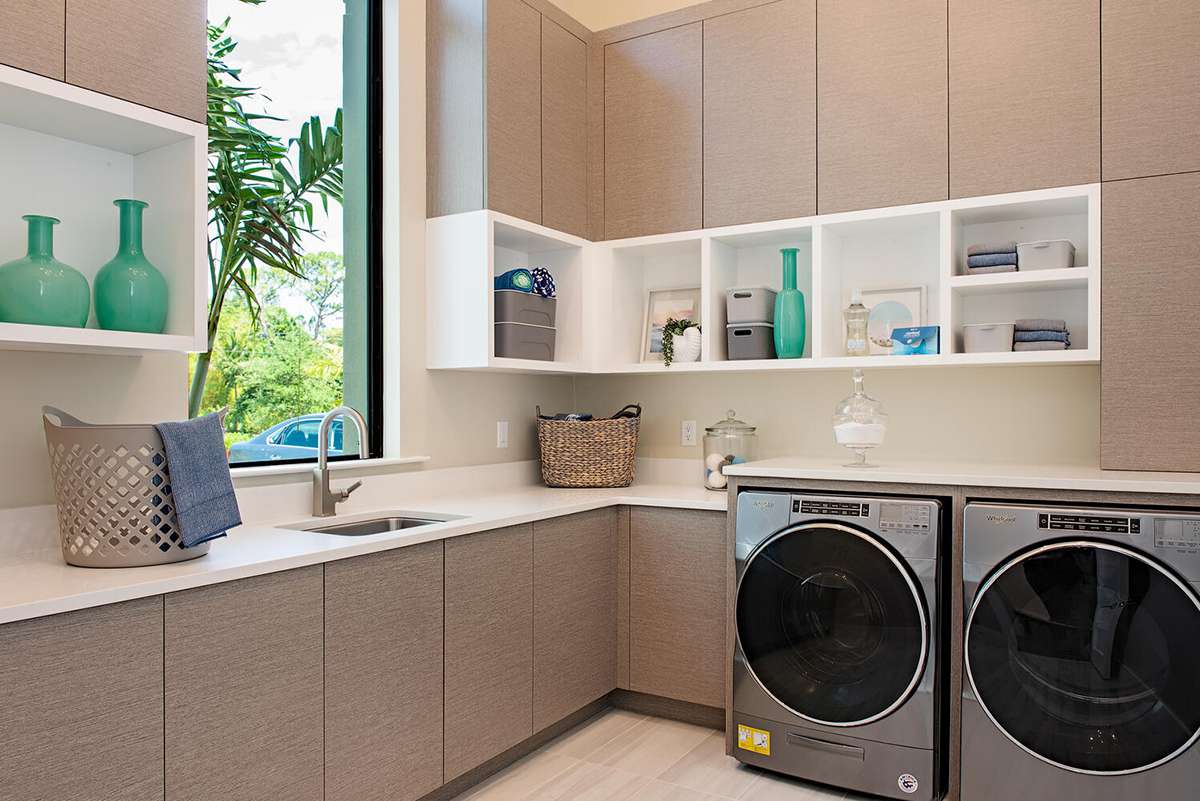
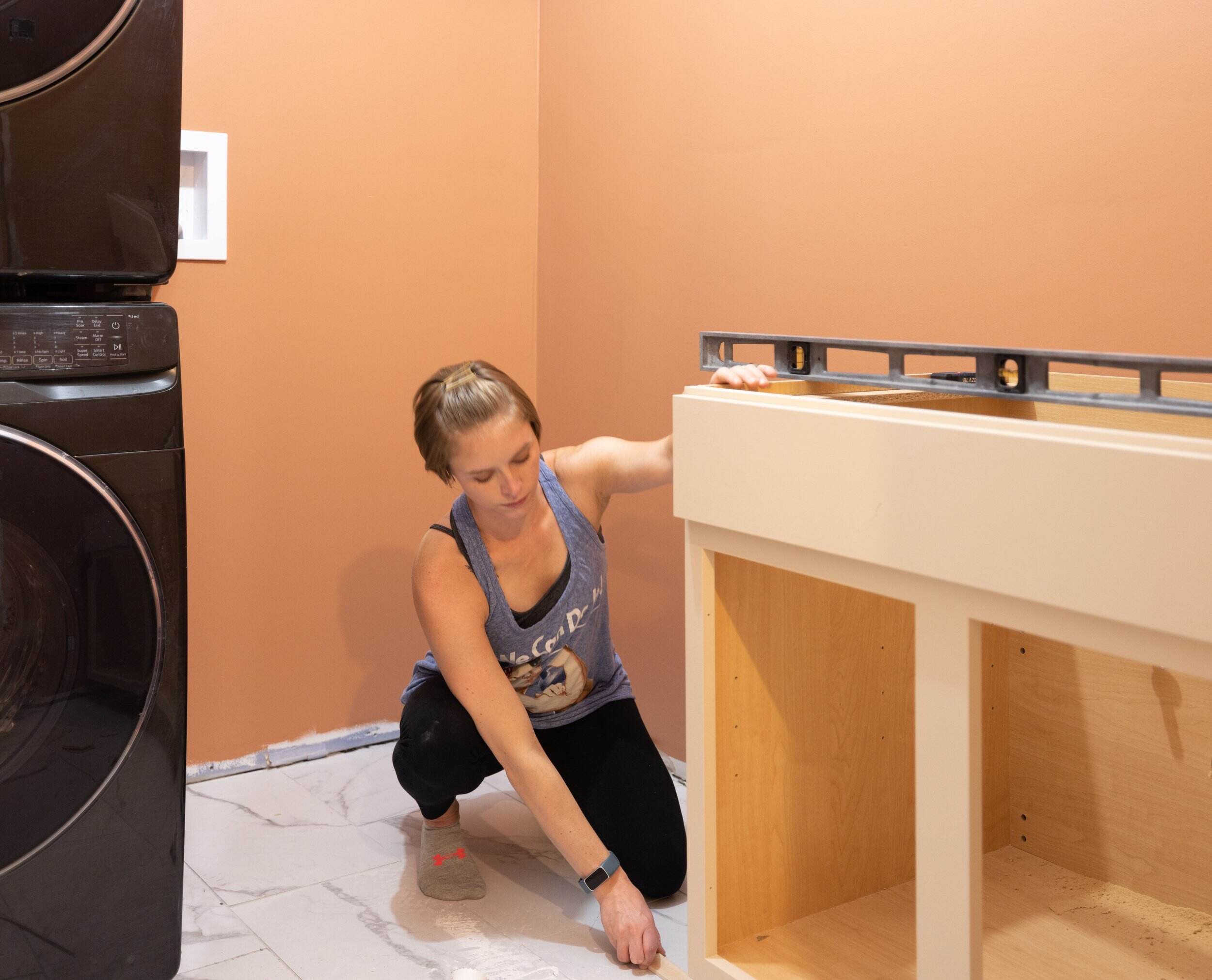
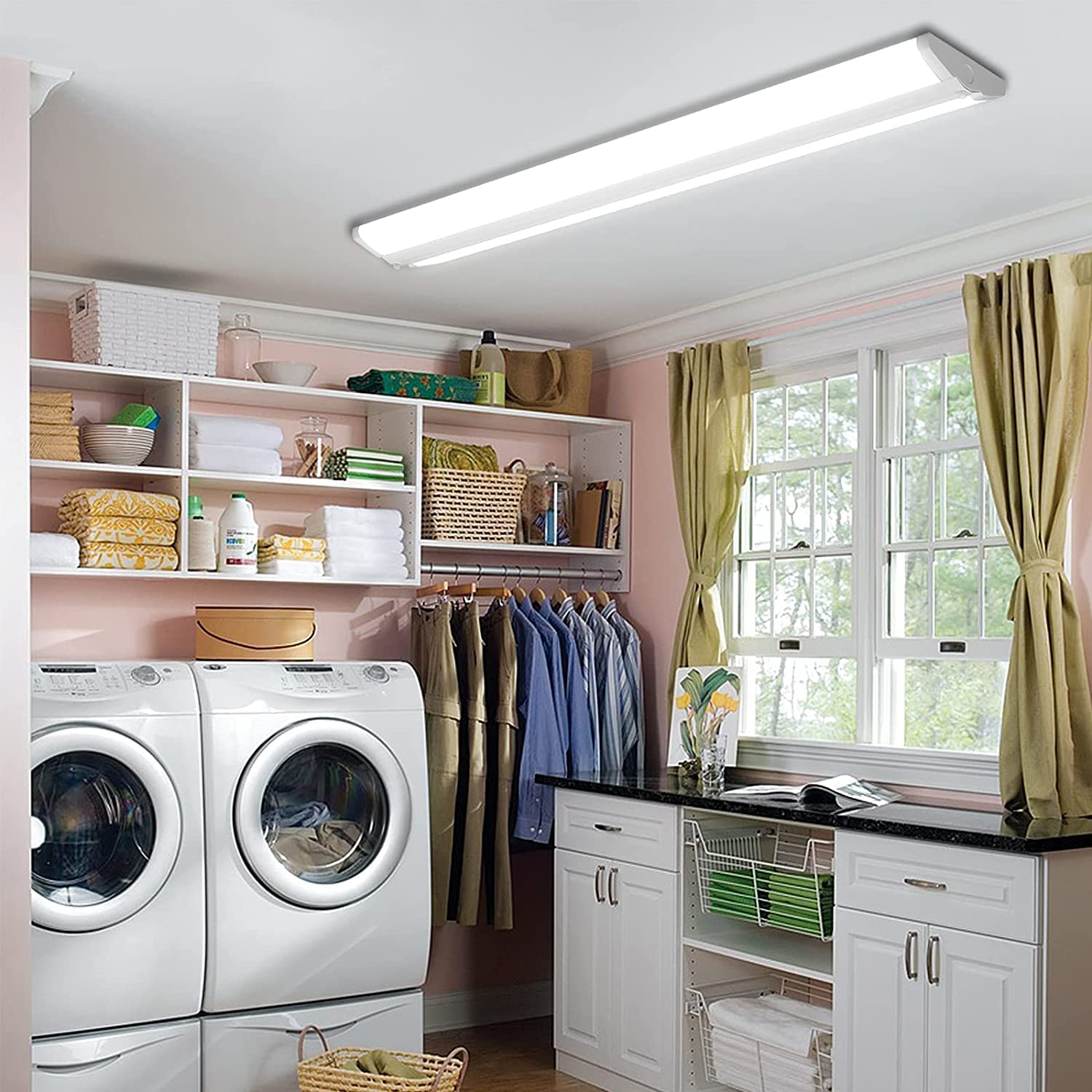

0 thoughts on “How To Reduce Humidity In Laundry Room”